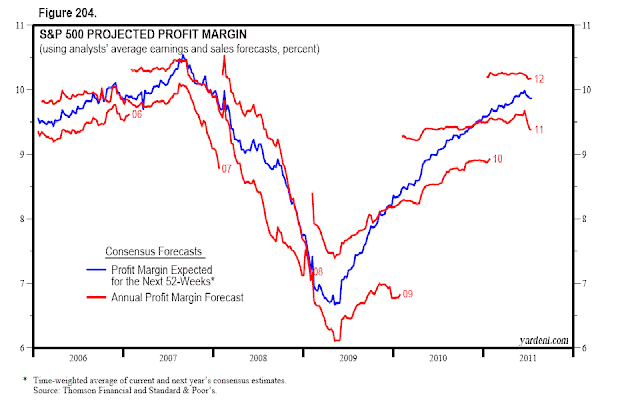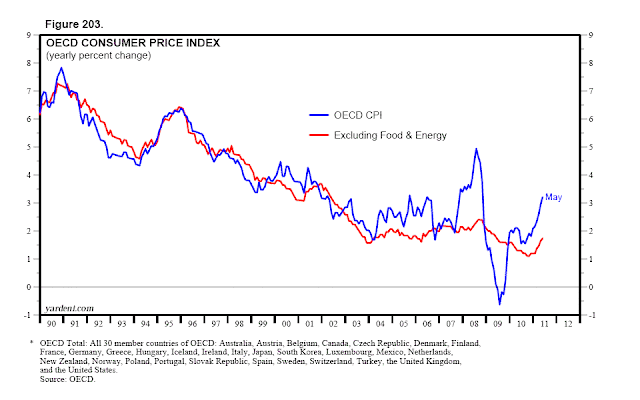Sunday, July 31, 2011
Thursday, July 28, 2011
Capital Goods Orders & Shipments
Wednesday, July 27, 2011
Jobs & Home Prices
Given the lackluster pace of hiring as reflected in the “jobs hard to get” response, it’s not surprising that the Conference Board’s Consumer Confidence Index (CCI) remains relatively depressed this far into an economic recovery. The index did edge up to 59.5 in July, well below its previous cyclical high of 111.9 during July 2007. At 35.7, the CCI Present Situation component is considerably below its March 2007 peak of 138.5. Also depressing consumer confidence must be the continued weakness in home prices. There was a small m/m uptick in the S&P/Case-Shiller 20 Metros Home Price Index during May. However, the 12-month average of the median existing home price compiled by the National Association of Realtors remained around a cyclical low of $170,000 during the three months through June. Prices haven’t been this low since the spring of 2003, and are down a whopping 24.3% from the record high of $224,283 during July 2006. |
Monday, July 25, 2011
Global Oil Demand
 |
Old World oil demand is up only 0.9% from a year ago and down 1.1% from two years ago. New World oil demand is up 3.7% and 8.9% over those same two periods. |
US Government Outlays & Receipts
Thursday, July 21, 2011
S&P 500 Revenues & Profit Margin
Wednesday, July 20, 2011
Core Inflation Rates
Tuesday, July 19, 2011
The Price of Gold
There is an interesting close correlation between the price of gold and the sum of US Treasuries and Agencies held by the Fed and foreign central banks. This shows that the price goes up as banks monetize the swelling debt of the |
Sunday, July 17, 2011
US Retail Sales
Thursday, July 14, 2011
S&P 500 Earnings
Wednesday, July 13, 2011
China's M2 and Bank Loans
Tuesday, July 12, 2011
Education and Employment
Sunday, July 10, 2011
US Employment Indicators
Thursday, July 7, 2011
Soft Patch & Stock Prices
Wednesday, July 6, 2011
Purchasing Managers Indexes
Tuesday, July 5, 2011
Subscribe to:
Posts (Atom)













